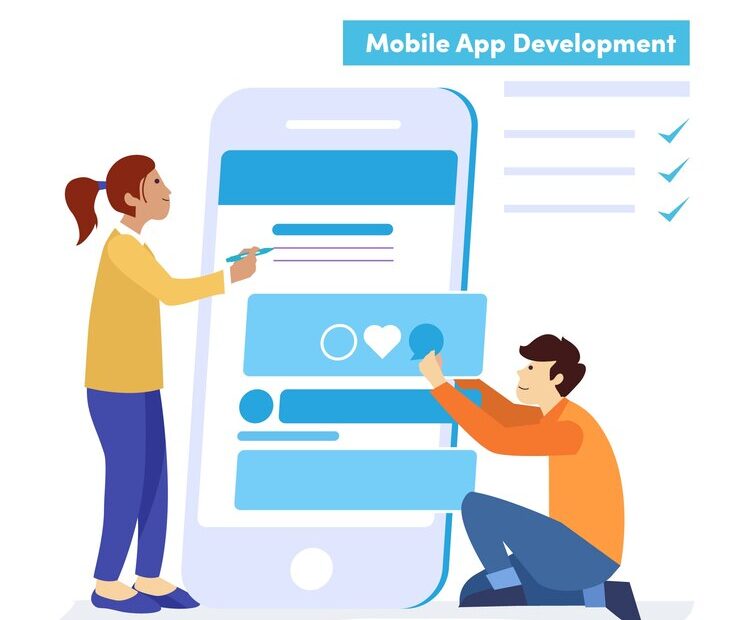Create mobile app has become an essential part of business growth and digital transformation. Mobile apps have become an integral part of our daily lives, from social networking and gaming to e-commerce and business solutions. Whether you are a startup, a business owner, or an entrepreneur, understanding the cost of developing a mobile app is crucial. The cost can vary significantly based on several factors, including complexity, features, platform, development team, and ongoing maintenance. This article provides an in-depth analysis of the costs involved in mobile app development.
Factors Affecting Mobile App Development Costs
1. App Complexity
Simple Apps: These apps have basic features such as a login system, user profiles, and limited functionality. Example: a calculator or note-taking app. These apps typically take 2-3 months to develop.
Moderate Complexity Apps: Apps with database integration, third-party API integration, and custom UI/UX. Example: fitness tracking or e-commerce apps. These apps take 4-6 months to develop.
Highly Complex Apps: Apps with real-time synchronization, AI-powered features, augmented reality (AR), or advanced security protocols. Example: Uber or social media apps like Instagram. Development timelines for such apps range from 6 months to over a year.
2. Platform (iOS, Android, or Both)
Developing for a single platform (either iOS or Android) is less expensive than developing for both.
Native development (using Swift for iOS and Kotlin for Android) is typically more expensive than cross-platform development using frameworks like Flutter or React Native.
Cross-platform apps save costs and development time but may have performance limitations.
Hybrid apps using frameworks like Ionic or Cordova may also reduce development time but can affect the user experience compared to native apps.
3. Development Team and Location
Freelancers: More affordable but may lack the expertise and scalability needed for large projects. Costs range from $10 – $100 per hour.
In-House Development: Offers better control but is costly due to salaries, benefits, and infrastructure. Salaries for developers range from $70,000 to $150,000 annually.
Outsourcing to Agencies: Costs vary based on location:
USA/Canada: $100 – $250 per hour
Western Europe: $60 – $150 per hour
Eastern Europe: $30 – $80 per hour
India/Southeast Asia: $10 – $50 per hour
Offshore vs. Nearshore Outsourcing: Offshore outsourcing is cost-effective but may lead to communication challenges, whereas nearshore outsourcing provides a balance between cost and collaboration.
4. Features and Functionalities
User Authentication (Login/Signup): $2,000 – $5,000
Push Notifications: $1,500 – $3,000
Payment Integration: $2,500 – $5,000
Chat/Messaging System: $5,000 – $10,000
Geolocation Services: $5,000 – $15,000
AI/ML Integration: $10,000 – $50,000
Augmented Reality (AR): $20,000 – $100,000
API Integrations: $3,000 – $15,000
Cloud Storage Integration: $5,000 – $20,000
Admin Panel Development: $5,000 – $25,000
Blockchain Integration: $15,000 – $50,000
Subscription-Based Features: $5,000 – $20,000
5. Design and User Experience (UX/UI)
Create Mobile App well-designed enhances user engagement and retention. Custom UI/UX design can cost between $5,000 and $50,000, depending on complexity.
Wireframing and prototyping tools such as Figma, Adobe XD, or Sketch can be used for cost-effective design planning.
Accessibility and inclusive design considerations can add to the cost but improve usability for a wider audience.
6. Backend Development and Database
Backend development for server-side logic, databases, and APIs can cost between $10,000 and $50,000, depending on data storage, security, and scalability requirements.
Server hosting costs vary, with cloud solutions like AWS, Firebase, or Azure costing between $100 and $1,000 per month based on usage.
Data encryption, security compliance (such as GDPR, HIPAA), and server maintenance add additional costs.
7. Testing and Quality Assurance (QA)
Ensuring bug-free performance across multiple devices and platforms typically costs 15-20% of the total development cost.
QA testing includes functional testing, performance testing, security testing, and usability testing.
Automation testing can reduce long-term costs but requires an initial investment in testing frameworks.
8. Post-Launch Maintenance and Updates
Apps require regular updates, bug fixes, and feature enhancements. Maintenance costs typically range from 15-20% of the initial development cost per year.
Ongoing costs may include hosting, third-party service fees, and security updates.
Customer support, analytics monitoring, and feature scaling should be accounted for.
Estimated Cost Breakdown Based on App Type

Additional Costs to Consider
1. App Store Fees
Apple App Store: $99 per year
Google Play Store: $25 one-time fee
Publishing an app also requires compliance with store guidelines and policies.
2. Marketing and User Acquisition
Paid Ads, SEO, Social Media Marketing: $5,000 – $100,000+
Influencer marketing, affiliate programs, and ASO (App Store Optimization) also add to marketing expenses.
Referral programs and reward-based advertising can increase engagement.
3. Third-Party Integrations
Cloud Storage, Payment Gateways, AI services: Varies based on usage
Google Maps API, Stripe/PayPal, Firebase services, and analytics tools such as Google Analytics and Mixpanel can add to recurring costs.
Compliance with third-party service agreements may add legal and licensing fees.
Conclusion
Create mobile app cost depends on multiple factors, including complexity, platform, development team, and features. For startups and businesses, it is essential to define a clear budget and prioritize features based on market needs. Whether opting for native or cross-platform development, working with an experienced team ensures a successful app launch. By planning for both development and post-launch maintenance, businesses can create sustainable and high-performing mobile applications.
